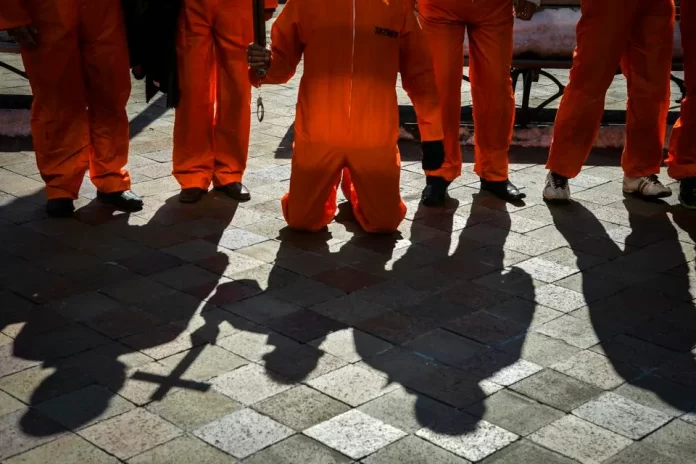This article is originally published in forbes.com by Dr. Ewelina U. Ochab
February 15, 2025, marks the tenth anniversary of Daesh (Islamic State, ISIL) releasing the video of the murder of 21 men on a beach in Libya. The majority of them were Egyptian Coptic Orthodox Christians who were abducted from Sirte, Libya, between December 2014 and January 2015. One of the men was from Ghana and chose to stay with the Coptic men and face the same fate. Members of Daesh, a terror organization, beheaded the 21 men on the beach and then posted the photographs in Dabiq, its propaganda magazine. Daesh also directed and posted a video of the brutal murder across its social media for everyone to see and to spread terror among the communities it considered “infidels.”
Back in February 2015, Daesh had a prominent presence in many parts of Syria and Iraq, and their atrocities were infamous across the region, as self-promoted by the group online. The murder of the 21 shook the world as the atrocities were carried out in a functioning state, Libya, where Daesh established a significant presence and flourished with impunity. The murder of the 21 men was followed by many Egyptian Copts leaving Libya out of security concerns.
Ten years later, the risk of Daesh continues to be present in many parts of the world. On February 10, 2025, the U.N. Security Council was told that Daesh remains a serious global security threat despite years of sustained efforts to dismantle its operations. The report presented to the U.N. Security Council stressed that “Daesh continued to maintain a reduced pace of activity in Iraq. In the Syrian Arab Republic, there was a risk of the group exploiting security vacuums after the fall of the Syrian government of Bashar Al-Assad on December 8. Daesh and its affiliates continued to increase their focus on activities in Africa, seeking to expand territorial control. Islamic State in Iraq and the Levant Khorasan (IS-K) continued to pose the predominant terrorist threat in Afghanistan, the region and beyond.”
During the briefing, Natalia Gherman, Executive Director of the Counter-Terrorism Committee Executive Directorate told the U.N. Security Council that “Daesh remains agile, taking advantage of ongoing conflicts and regions experiencing growing instability.” The U.N. Security Council was told that the volatile situation in the Syrian Arab Republic is of concern. Undersecretary-General Vladimir Voronkov, Head of the U.N. Office of Counter-Terrorism, warned that “there is a risk that stockpiles of advanced weapons could fall into the hands of terrorists.” This risk is said to be particularly high in the Syrian Badia region, the central hub for Daesh’s external operational planning. In Sub-Saharan Africa, Daesh and its affiliates continue to increase their operations and expand territorial control. Islamic State West Africa Province (ISWAP) and Islamic State in the Greater Sahel (ISGS) have been carrying out deadly attacks on civilians. In the Sahel, Daesh affiliates conducted attacks, including against “schools in Burkina Faso, Mali and Niger, resulting in the killing of children and the denial of humanitarian assistance. These groups continued to expand their operations into coastal countries, especially in Benin and Togo, with a potential impact on Ghana.”
The U.N. Security Council was further told that Daesh continues to recruit and inspire attacks through online propaganda. Ms. Gherman reported how IS-K has been plotting attacks beyond Afghanistan, including in Europe. According to the report, “In July [2024], French security services arrested an 18-year-old individual who was planning to attack an Olympic soccer match in Saint-Étienne and was connected to a Chechen ISIL member operating in the Syrian Badia.” They were also actively recruiting from Central Asian States.
Last, but not least, the U.N. Security Council was warned about “the widespread accessibility of advanced technology, such as the three-dimensional printing of weapon components, including parts for unmanned aircraft systems, and experimentation with artificial intelligence. The use of artificial intelligence by terrorist groups might pose a particular risk in the recruitment and radicalization of young people to violence, including through more targeted and tailored propaganda.”
Mr. Voronkov emphasized the need for a coordinated, multilateral approach to counter Daesh’s evolving strategies: “Despite steady counter-terrorism efforts by Member States, international and regional partners, Daesh continues to demonstrate resilience and adapt its modus operandi. The group’s ability to exploit instability highlights the need for sustained international collaboration.”
A decade after the horrific atrocities brought about by the terror organization, the international community must step up efforts to ensure that the horrors of Daesh’s crimes are never repeated. This includes comprehensive responses to identify early warning signs and risk factors of atrocities to come and acting upon them in line with international duties and political commitments.
Dr. Ewelina U. Ochab
https://www.forbes.com/sites/ewelinaochab/2025/02/15/ten-years-after-daesh-killed-21-men-on-the-breach-in-libya/



